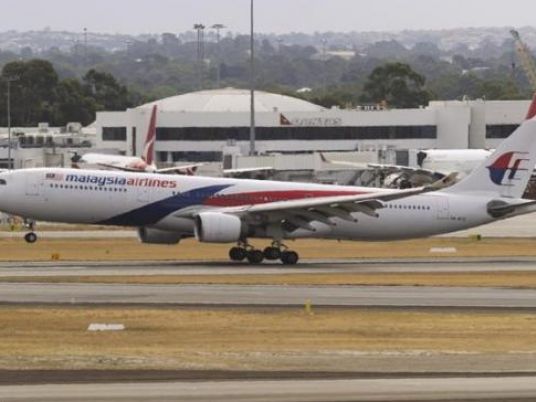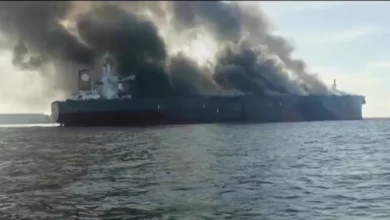
U.S. equipment designed to detect black box signals arrived in Australia on Wednesday, as searchers stepped up efforts to find some trace of a Malaysian airliner thought to have crashed 18 days ago thousands of miles off course in the Indian Ocean.
A dozen aircraft from Australia, the United States, New Zealand,China, Japan and South Korea were once more scouring the seas some 2,500 km (1,550 miles) southwest of Perth in the hunt for wreckage, after bad weather on Tuesday forced the suspension of the search.
"The crash zone is as close to nowhere as it's possible to be but it's closer to Australia than anywhere else," Australian Prime Minister Tony Abbott said, before leading the country's parliament in a moment's silence.
"A considerable amount of debris has been sighted in the area where the flight was last recorded. Bad weather and inaccessibility has so far prevented any of it from being recovered. But we are confident that it will be."
Malaysian Prime Minister Najib Razak this week confirmed that Malaysia Airlines Flight MH370, which vanished while flying to Beijing from Kuala Lumpur, had crashed in the southern Indian Ocean.
Citing satellite-data analysis by British company Inmarsat, he said there was no doubt the Boeing 777 came down in one of the most remote places on Earth – an implicit admission that all 239 people on board had died.
Recovery of wreckage could unlock clues about why and how the plane had diverted so far off course in one of aviation's most puzzling mysteries. Theories range from a hijacking to sabotage or a possible suicide by one of the pilots, but investigators have not ruled out technical problems.
Passenger relatives distraught
An Australian navy ship returned to the area after being driven away by gale force winds and 20-metre (66 ft) waves on Tuesday, while a Chinese icebreaker and three Chinese navy vessels are now in the search zone.
Early flights, including a Japanese P3-Orion were returning from the search on Wednesday afternoon and an AMSA spokesman said no objects had so far been spotted.
The United States has sent an undersea Navy drone and a high-tech black box detector which will be fitted to an Australian Defence vessel due in Perth in the coming days.
The so-called black boxes – the cockpit voice recorder and flight data recorder – record what happens during flight, but time is running out to pick up locator beacons that stop about a month after a crash due to limited battery life.
Malaysia said on Tuesday that the U.S. "Towed Pinger Locator" would not arrive in the search area until April 5, which would give it only a few days to find the black box before the beacon battery would be expected to run out.
The prolonged and so far fruitless search and investigation have taken a toll, with dozens of distraught relatives of Chinese passengers clashing with police in Beijing on Tuesday, accusing Malaysia of "delays and deception".
Malaysia's confused initial response to the plane's disappearance and a perception of poor communications has enraged many relatives of the more than 150 Chinese passengers and has strained ties between Beijing and Kuala Lumpur.
Chinese special envoy, Zhang Yesui, is meeting with Malaysia's Najib on Wednesday, state media reported.
Multinational investigation
Flight MH370 vanished from civilian radar screens less than an hour after taking off on March 8 and investigators believe someone on the flight may have shut off the plane's communications systems.
Partial military radar tracking showed it turning west and recrossing the Malay Peninsula, apparently under the control of a skilled pilot.
The air crash investigation is shaping up as one of the most costly and difficult ever. Normally, an official investigation can only begin once a crash site has been identified. That would give Malaysia power to coordinate and sift evidence.
A government source told Reuters that Malaysia would lead the investigation, but hoped other countries, especially Australia, would play a major role.
Despite the shutoff of its main reporting and communications systems, the plane continued to exchange hourly electronic "pings" with a commercial satellite operated by Inmarsat that showed it kept flying for around six hours after the last radar sighting northwest of Malaysia.
Initially, those faint signals could only place the plane in one of two massive arcs stretching across Asia. But Najib said Inmarsat had performed further calculations to narrow the location of the final "ping" to the southern Indian Ocean.
Malaysian authorities said a there was a further "partial handshake" between the satellite and the aircraft eight minutes after the last ping, which was still being analysed to see if it could shed any further light on the plane's fate.




